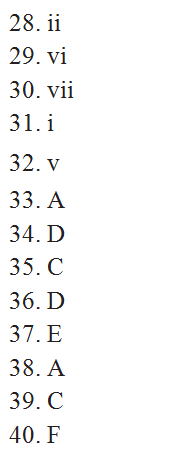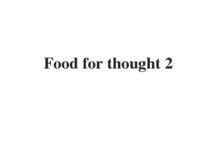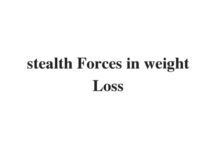Table of Contents
Passage
A There was a time when any self-respecting television show, particularly one aimed at a young audience, had to have an e-mail address. But on Europe’s TV screens, such addresses are increasingly being pushed aside in favour of telephone numbers to which viewers can send text messages from their mobile phones. And no wonder: according to research about to be published by Gartner, a consultancy, text messaging has recently overtaken Internet use in Europe. One of the fastest-growing uses of text messaging, moreover, is interacting with television. Gartner’s figures show that 20% of teenagers in France, 11% in Britain and 9% in Germany have sent messages in response to TV shows.
B This has much to do with the boom in “reality TV” shows, such as “Big Brother”, in which viewers’ votes decide the outcome. Most reality shows now allow text-message voting, and in some cases, such as the most recent series of “Big Brother” in Norway, the majority of votes are cast in this way. But there is more to TV-texting than voting. News shows encourage viewers to send in comments; games shows allow viewers to compete; music shows take requests by text message; and broadcasters operate on-screen chartrooms. People tend to have their mobiles with them on the sofa, so “it’s a very natural form of interaction,” says Adam Daum of Gartner.
C It can also be very lucrative, since mobile operators charge premium rates for messages to particular numbers. The most recent British series of “Big Brother”, for example, generated 5.4m text-message votes and £1.35m ($2.1m) in revenue. According to a report from Van Dusseldorp & Partners, a consultancy based in Amsterdam, the German edition of MTV’s “Videoclash”, which invites viewers to vote for one of two rival videos, generates up to 40,000 messages an hour, each costing euro0.30 ($0.29). A text contest alongside the Belgian quiz show “I Against 100” attracted 10,000 players in a month, each of whom paid euro 0.50 per question in an eight-round contest. In Spain, a cryptic-crossword clue is displayed before the evening news broadcast; viewers are invited to text in their answers at a cost of euro 1, for a chance to win a euro300 prize. On a typical day, 6,000 people take part. TV-related text messaging now accounts for an appreciable share of mobile operators’ data revenues. In July, a British operator, mmO2, reported better-than-expected financial results, thanks to the flood of messages caused by “Big Brother”. Operators typically take 40-50% of the revenue from each message, with the rest divided between the broadcaster, the programme maker and the firm providing the message-processing system. Text-message revenues are already a vital element of the business model for many shows. Inevitably, there is grumbling that the operators take too much of the pie. Endemol, the Netherlands-based production company behind “Big Brother” and many other reality TV shows has started building its own database of mobile-phone users. The next step will be to establish direct billing relationships with them, and bypass the operators.
D Why has the union of television and text message suddenly proved so successful? One important factor is the availability of special four-, five- or six-digit numbers, called “shortcodes”.Each operator controls its own shortcodes, and only relatively recently have operators realised that it makes sense to co-operate and offer shortcodes that work across all networks. The availability of such common shortcodes was a breakthrough, says Lars Becker of Flytxt, a mobile-marketing firm, since shortcodes are far easier to remember when flashed up on the screen.

E The operators’ decision to co-operate in order to expand the market is part of a broader trend, observes Katrina Bond of Analysys, a consultancy. Faced with a choice between protecting their margins and allowing a new medium to emerge, operators have always chosen the first. WAP, a technology for reading cut-down web pages on mobile phones, failed because operators were reluctant to share revenue with content providers. Having learnt their lesson, operators are changing their tune. In France, one operator, Orange, has even gone so far as to publish a rate card for text-message revenue-sharing, a degree of transparency that would once have been unthinkable.
F At a recent conference organised by Van Dusseldorp & Partners, Han Weegink of CMG, a firm that provides text-message infrastructure, noted that all this is subtly changing the nature of television. Rather than presenting content to viewers, an increasing number of programmes involve content that reacts to the viewer’s input. That was always the promise of interactive TV, of course. Interactive TV was supposed to revolve around fancy set-top boxes that plug directly into the television. But that approach has a number of drawbacks, says Mr Daum. It is expensive to develop and test software for multiple and incompatible types of set-top box, and the market penetration, at 40% or less, is lower than that for mobile phones, which are now owned by around 85% of Europeans. Also, mobile-phone applications can be quickly developed and set up. “You can get to market faster, and with fewer grasping intermediaries,” says Mr Daum. Providers of set-top box technology are adding text-messaging capabilities to their products.
G The success of TV-related texting is a reminder of how easily an elaborate technology can be unexpectedly overtaken by a simpler, lower-tech approach. It does not mean that the traditional approach to interactive TV is doomed: indeed, it demonstrate^ that there is strong demand for interactive services. People, it seems, really do want to do more than just stare at the screen. If nothing else, couch potatoes like to exercise their thumbs.
Questions
Questions 28-32 The reading passage has seven paragraphs,A-E Choose the correct heading for paragraphs A-E from the list below.
Write the correct number, i-ix, in boxes 28-32 on your answer sheet.
List of Headings
i. an existed critical system into operating in a new way
ii. Overview of a fast growing business
iii. profitable games are gaining more concerns
iv. Netherlands takes the leading role
v. a new perspective towards sharing the business opportunities
vi. opportunities for all round prevalent applications
vii. revenue gains and bonus share
viii. the simpler technology prevails over complex ones
ix. set-top box provider changed their mind
28 Paragraph A
29 Paragraph B
30 Paragraph C
31 Paragraph D
32 Paragraph E
Questions 33-35 Choose the correct letter, A, B,C or D. Write your answers in boxes 33-35 on your answer sheet.
33 In Europe, a consultancy suggested that young audiences spend more money on
A thumbing text message
B writing E-mail
C watching TV program
D talking through Mobile phones
34 what happened when some TV show invited audience to participate:
A get attractive bonus
B shows are more popular in Norway than in other countries
C change to invite them to the reality show
D their participation could change the result
35 Interactive TV change their mind of concentrating set-top box but switched to:
A increase their share in the market
B change a modified set-top box
C build a embedded message platform
D march into European market
Questions 36-40 Use the information in the passage to match the people (listed A-E) with opinions ordeeds below. Write the appropriate letters A-E in boxes 36-40 on your answer sheet.
A Lars Becker Flytxt
B Katrina Bond of Analysys
C Endemol
D CMG
E mmO2
F Gartner
36 offer mobile phone message technology
37 earned considerable amount of money through a famous program
38 shortcodes are convenient to remember when turn up
39 build their own mobile phone operating applications
40 it is easy for people to send messages in an interactive TV
Answers



